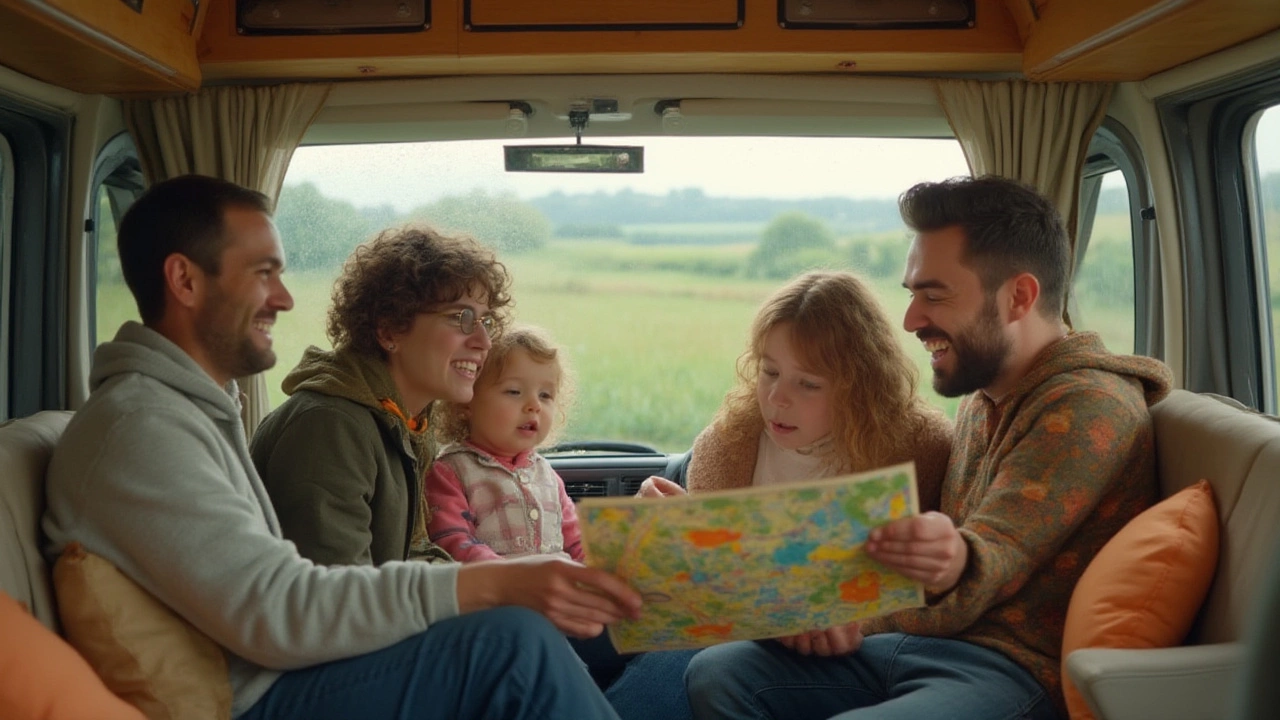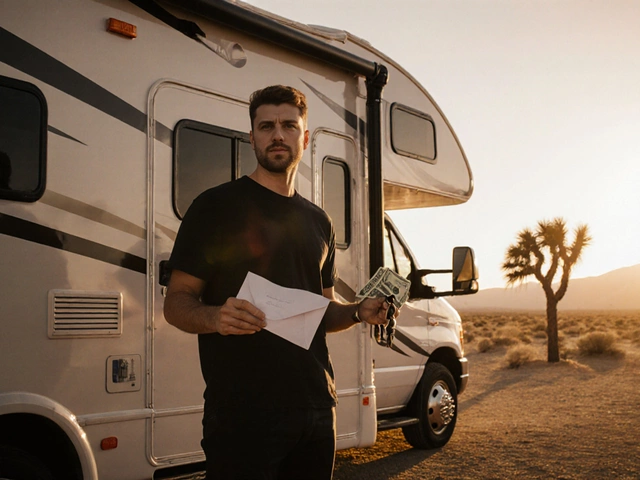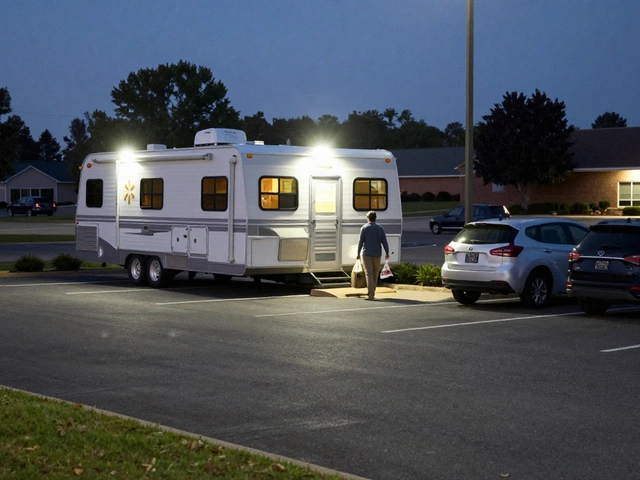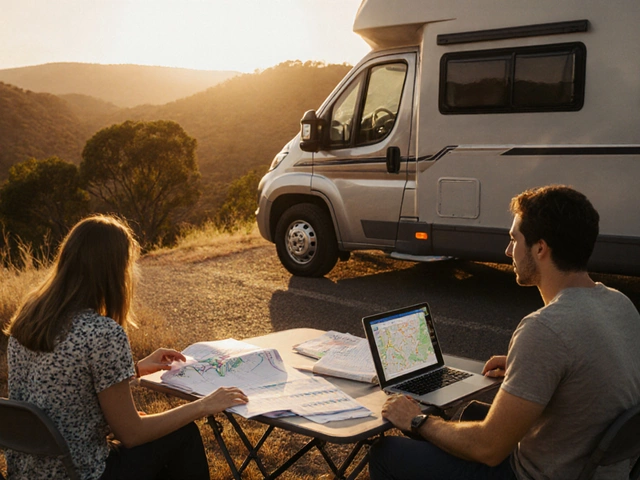Ever been rolling down the motorway miles from the next rest stop, chugging coffee, and suddenly—nature calls? It happens to all of us. If you're new to RV road-tripping, this scenario might leave you eyeing the bathroom just a few feet away and asking, "Can I pee in the RV while driving?" Good news: you’re far from alone. It's a question that RV owners, from weekend warriors to full-timers, wonder about at some point. There's more to it than you might think, too. Let's break down what actually happens when you use that toilet on the go, the rules, pitfalls, and some stuff most folks will never tell you.
Is It Legal to Use the RV Toilet While Driving?
The law on peeing in your RV as it barrels down the road isn’t cut and dry. In most regions—including the UK, US, and Europe—there isn’t a law that flat-out bans bathroom use while the vehicle is moving. The critical legal bit? Everyone traveling in a moving vehicle must use their seatbelt where fitted, except in some special vehicles like sleeper buses. So, do the same seatbelt rules apply to RV bathrooms? That’s where things get murky. The bathroom almost never has a seatbelt, so standing or moving about could technically get you in trouble if you’re stopped by certain authorities, especially in places with ultra-strict traffic laws. But real talk: it’s not a burning priority for police unless your movement distracts the driver, causes a scene, or contributes to unsafe driving.
There’s also the question of insurance. Many insurers expect everyone to be seated and belted while the vehicle’s underway. If you have a tumble in the bathroom and end up with a broken wrist, your insurer might point to the fine print and leave you high and dry. Some manufacturers stick a sticker in the loo (“Do not use WC while vehicle is in motion”), which is more for covering themselves than actually citing a legal code. Strangely enough, RV rental companies sometimes don’t warn renters about this—likely because enforcement is rare, but that doesn’t mean it’s risk-free. So, if you’re concerned about being strictly by-the-book, it’s probably safer to pull over, but few get ticketed just for using the bathroom on the go.
One more tip: seatbelt laws can vary not just country to country, but even state to state (in the US) or region to region. If you’re moving between different jurisdictions, it pays to know the local law. There are a few stories online about people in California and Germany getting lectured about being out of their seat on the motorway, but nothing that makes headlines. If you’re nervous, check out the chart below for a snapshot of some rules in popular RV travel spots:
| Region | Mandatory Seatbelt Use? | Allowed to Move While Driving? | Enforcement Level |
|---|---|---|---|
| UK | Yes, wherever seatbelts fitted | No, except to use on-board facilities | Low to moderate |
| US (varies by state) | Yes, but RV interiors may be exempt | Legally grey, rarely an issue | Low |
| Canada | Required, but not always enforced for interior use | No specific law | Low |
| Germany | Strict enforcement, must wear seatbelt | No moving unless built-in seat | High |
| Australia | Yes, wherever seatbelts fitted | Not advised, but rarely enforced | Low to moderate |
Safety Tips: Using the Bathroom in a Moving RV
Now for the real-life stuff. Using an RV bathroom on the move isn’t exactly as easy as hopping in while parked at the site. There’s a reason plenty of veteran road-trippers will advise you to "go before you go." Think about it—your RV is basically a house on wheels, but it does bounce, rattle, and sway, especially over potholes and country roads. Slipping on a wet floor or getting thrown against a wall during a sudden stop isn’t exactly how anyone wants to end their trip.
What can go wrong? Plenty! Balance is key. Most people grab handles, towel racks, or even cabinet edges to steady themselves. But those things aren’t designed for major weight. I’ve heard from folks who actually tore the towel rail out of the wall during a sharp turn. If you absolutely have to answer the call of nature, pick the smoothest bit of road and give the driver a heads-up to avoid surprise braking. And please—lock the bathroom door and don’t forget to latch the toilet lid. Nothing wakes you up like a flying roll of toilet paper during an emergency swerve.
Here are some quick tricks to boost your odds of a safe trip to the loo:
- Slip-resistant bathroom mats: They’re not just for comfort, they really save you from sliding on vinyl flooring.
- Handholds and grab bars: If your RV doesn’t have them, install a few strategic ones—especially near the toilet and shower.
- Alert the driver: Ask them to take it easy for a minute, and avoid overtaking or sudden lane changes.
- Tidy up clutter: It’s easy to trip on shoes or laundry tossed in the path to the bathroom—especially at night.
- Keep water bottles and loose items out of the way: You’d be surprised what can become a projectile if you brake suddenly.
And here’s a fact you probably didn’t know: according to claims data from several major RV insurers, bathroom falls are one of the top five injury causes inside motorhomes (right behind kitchen mishaps and ladder accidents). So don’t think you’re being overcautious. Using the bathroom while the rig rolls isn’t exactly forbidden, but it’s not without risk. As one full-timer told me, “Nothing shakes up your morning quite like tumbling out the bathroom door in your boxers because your mate stomped the brake.”
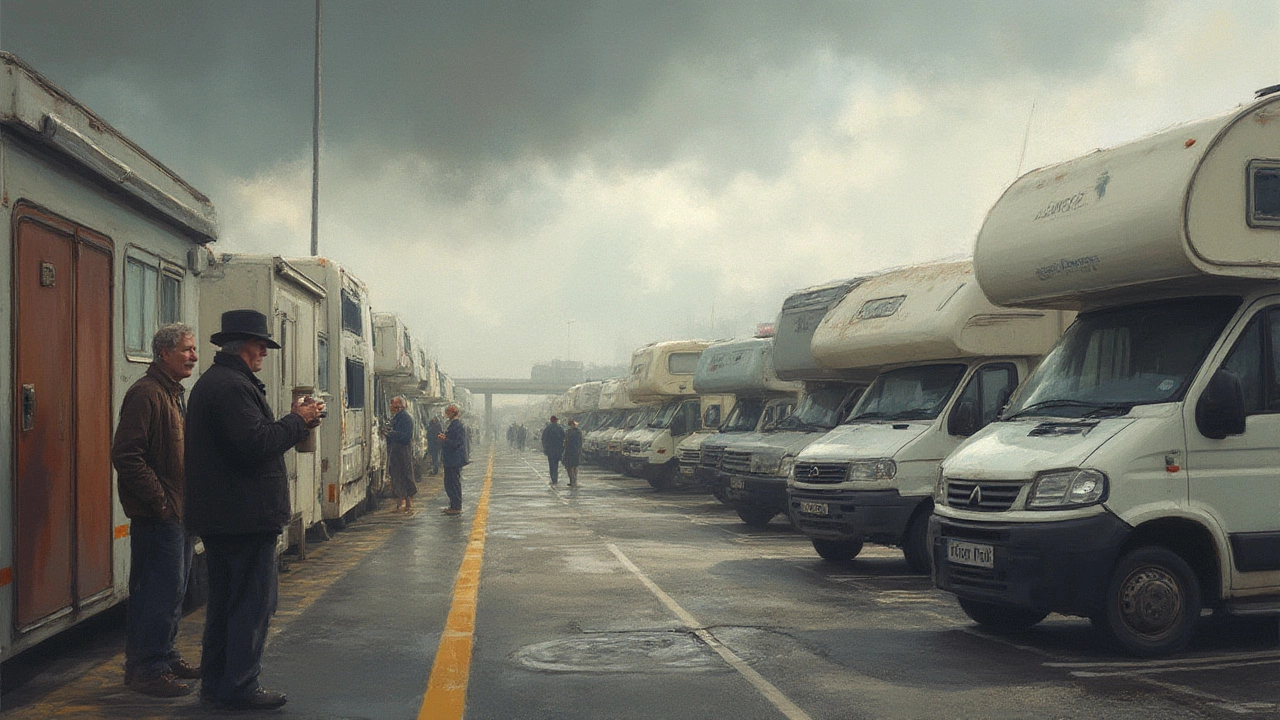
How Your RV’s Plumbing Handles On-the-Move Use
Alright, let’s talk about what’s happening under the floor. Your RV’s toilet doesn’t work like the one at home. Instead of flushing to a sewer, your “business” goes into a holding tank (the black tank for toilet waste). As for how the plumbing holds up to use while you’re moving—it’s pretty much built for it. Those tanks are tightly sealed and secured to handle bumps, hills, and sudden stops.
One thing newbies sometimes don’t realise is that typical cassette toilets (common in European campers) or freshwater-flush toilets in big American rigs both funnel waste into tanks designed to be slosh-proof. That doesn’t mean you can’t run into trouble though. Forget to close the flush valve, and you could get nasty smells or even minor splashes in rough conditions. Fill your tank too full early in the trip? Welcome to the “black tank shuffle”—where you drive nervously until you can dump the tank.
There’s a common myth that flushing the toilet while driving can damage your plumbing. Nope. Unless you seriously overfill the tank or ignore leaks, everything stays where it should until you reach a dumping station. Modern RVs often have tank monitors to help you keep tabs on levels. One thing you should know: if you go while the RV is tilted steeply (like up a mountain road), the liquid in the tank shifts and can sometimes creep up the vent. No one wants to be hit with a surprise whiff of black-tank gas when you open the lid, so vent fans help a ton.
- Use RV-safe toilet paper. Clogs on the road are not a fun surprise—so leave the ultra-plush tissue at home.
- Turns and stopping can agitate the tank, mixing solids and liquids. If you hear weird sloshing, that’s normal, but don’t ignore leaks!
- If your tank is close to full, any sudden braking could force waste up against the seals. Make dumping a regular habit, not a last-minute chore.
- Add a tank deodorizer before you drive off—nothing ruins a road trip faster than smells sneaking out mid-drive.
One tip from experienced RVers: the smaller and more basic your camper, the more likely you’ll want to use the facilities while parked. Big A-class motorhomes and luxury rigs make it way easier, thanks to smoother rides and sturdier bathrooms. Caravans that have to be towed? Don’t even think about it while in motion—just wait for a stop.
Travel Tips for Smoother RV Bathroom Breaks
Let’s get real: even the best planners can’t always line up rest stops perfectly, especially with kids or lots of coffee-drinkers on board. If you want to avoid drama, a little prep goes a long way. Start by making sure everyone knows the "bathroom game plan"—when to use the loo, how to signal the driver, and what not to do inside while moving. Believe me, nothing sparks an argument like someone walking around with a cup of tea in one hand and a phone in the other during a sharp corner.
Try mapping likely stopping points along your route before setting off. Apps like Motorhome Stopover or Park4Night list rest areas, dump stations, and pit stops, all of which make it less likely you’ll have to attempt the acrobatic stunt of using a swaying bathroom. If you’re heading out with kids or folks with mobility issues, show them how the bathroom works before you hit the road.
- Have a "bathroom bag" handy with wipes, extra sanitizer, and spare toilet paper—just in case the usual stuff ends up flying off a shelf mid-journey.
- Set a "quiet zone" policy while someone’s in the bathroom, so the driver knows to lay off harsh maneuvers.
- Remind everyone: indoor shoes or slippers with grippy soles are way better than socks for making trips down the RV aisle.
- Use rubber bands or clips to secure toilet paper rolls and small bottles—one bump and those things become missiles.
- Make it fun for kids: some families use a timer or even silly songs as reminders for scheduled bathroom breaks, so they’re not suddenly panicking at the worst moment.
Something a lot of people don’t talk about is just how freeing on-board bathrooms are—especially for wild camping or long-haul drives far from service stations. There’s nothing quite like knowing you’ll never have to duck behind a hedge or sprint across a car park in the rain again. At the same time, don’t abuse the privilege. Too many “just-in-case” bathroom breaks can fill up your tank in a flash, and nobody wants a mid-trip dump emergency.
So, should you use your RV bathroom while driving? Sure, you basically can—it’s not illegal in most places and the plumbing can handle it. But use some common sense: keep it quick, keep it safe, and keep the tank in mind. And remember, even seasoned RV owners have their stories of wild rides, slippery floors, and near misses. Always look out for the driver and other passengers, and you’ll be golden on your next trip—no pun intended.
